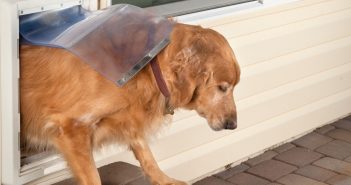Your dogs diet is one of the most important factors when it comes to his or her health. You’ll probably already know that a puppy is better off eating puppy food, an adult – adult food and a senior dog, well you guessed it – senior food. But is there more we can do? Of course, there are slight differences in requirements for separate breeds but it’s the size of the breed, the size of the dog bowl and what goes into it that really matters.
For example, as puppies – larger breeds are prone to diseases that can be a result of energy, calcium and phosphorous dense diets. Hip Dysplasia is a common example of this. With this in mind, tailoring their diet to include less energy, calcium and phosphorous is a good idea. A simple way of thinking of this is that larger dogs are a lot slower and more cumbersome then their smaller counterparts and thus require less of certain nutrients per pound.
On the flip side, smaller breed puppies have a very high metabolic rate which means they can burn through a meal extremely quickly. A lack of certain nutrients can result in weakness, lethargy and sometimes seizures. Because of this, smaller breed puppies should be fed smaller amounts of calorie-dense food at least 3 times a day.
The difference in dietary needs continue into adulthood. Once again, the main difference between breeds here is their metabolic rate. Large dogs tend to need to take in less calories per pound than their smaller friends. This may sound contradictory but remember they’ll still require more food overall, just less pound for pound. Again, the reason for this is that smaller dogs are a lot nimbler – their joints move a lot quicker – requiring more energy and nutrition for those muscles.
It’s commonly accepted that on average a large breed dog needs around 20 calories per pound, whereas a smaller breed needs a lot more – around 35 calories per pound. If we do a few sums we can see that a dog that weighs 15 pounds would need around 525 calories, but a dog that weights 80 pounds would need around 1600 calories.
As your dog ages into his or her senior years their nutritional needs become a lot more particular. Tailoring the diet to match the breed and condition is even more important at this age and at this point it can be an especially good idea to consult your vet. Small dogs generally live longer than their larger friends and introducing a diet with high levels of antioxidants can help keep them healthy when they’re most susceptible to certain illnesses.
Larger dogs on the other hand, seem to almost always suffer from some form of arthritis when approaching their golden years. Because of this, large breed senior foods tend to contain certain ingredients (look out for Glucosamine and Chondroitin on the label) that promote joint health.
As I mentioned before, as your dog gets older it’s usually a good idea to consult your vet about dietary needs. In fact, over the last couple of years the American Animal Hospital Association (AAHA) has made nutritional checks a standard assessment for every patient, along with temperature pulse, respiration rates and pain. This is great news for those of us who want nutritional advice when we visit the vet – even the AHAA admits that only 7% of dogs that could benefit from specialized diets are actually on them.
So, baring all of this mind you may find yourself faced with the task of switching and altering your dogs diet from time to time. For some dogs this will never be problem (we probably all know a dog that will eat anything!) but for some, changes in diet can lead to diarrhea, a loss of appetite and other small complaints.
When this is the case (or even if you just want to be careful) adapting the diet gradually is the best course of action. Start off on day one by mixing 20% of the new food with 80% of the old. On day two mix 40% of the new with 60% of the old and so on. If at any point during this process vomiting, a loss of appetite or diarrhea develops stop feeding your dog the new food and visit your vet as soon as possible.
In fact, when it comes to nutrition the main thing to remember is that a visit to your vet is never too over the top, especially as your dog approaches his or her senior years.
Lewis Wallerd is the co-founder of Dog Walkers City – the webs directory of Dog walkers covering the US and the UK. Fancy the idea of being a Dog sitter? Check out this guide.




8 Comments
In feeding our pet we should consider these things. Our pets need care and understanding too.
Yup I agree, sizeable differences in feeding a pet. Thanks for sharing this with us. It could help to a pet owner like me.
I always wanted to provide beautiful satisfaction to my pet, and I take good care of them just like feeding them with a right amount of foods…
I do agree that feeding our lovable pet is sizeable… I am a pet lover and I need to provide the best for my little ones…
Thanks for sharing this info we have two new Shih Tzus’s and they are very picky. We buy their food at http://www.organicpetboutique.com they have a great variety of organic foods.
Good Luck to all the Pet Owners:)
Now if we can just train people to eat the right amount of food:0)
Size is everything, at least when it comes to pet meal portions.
Thanks for this article! I really learned a lot about how much my dogs should be eating. I have a 14 lb dog, and I have been thinking of switching her to a home made diet, so your calorie count really helps me to know how much food she should be getting when I switch!